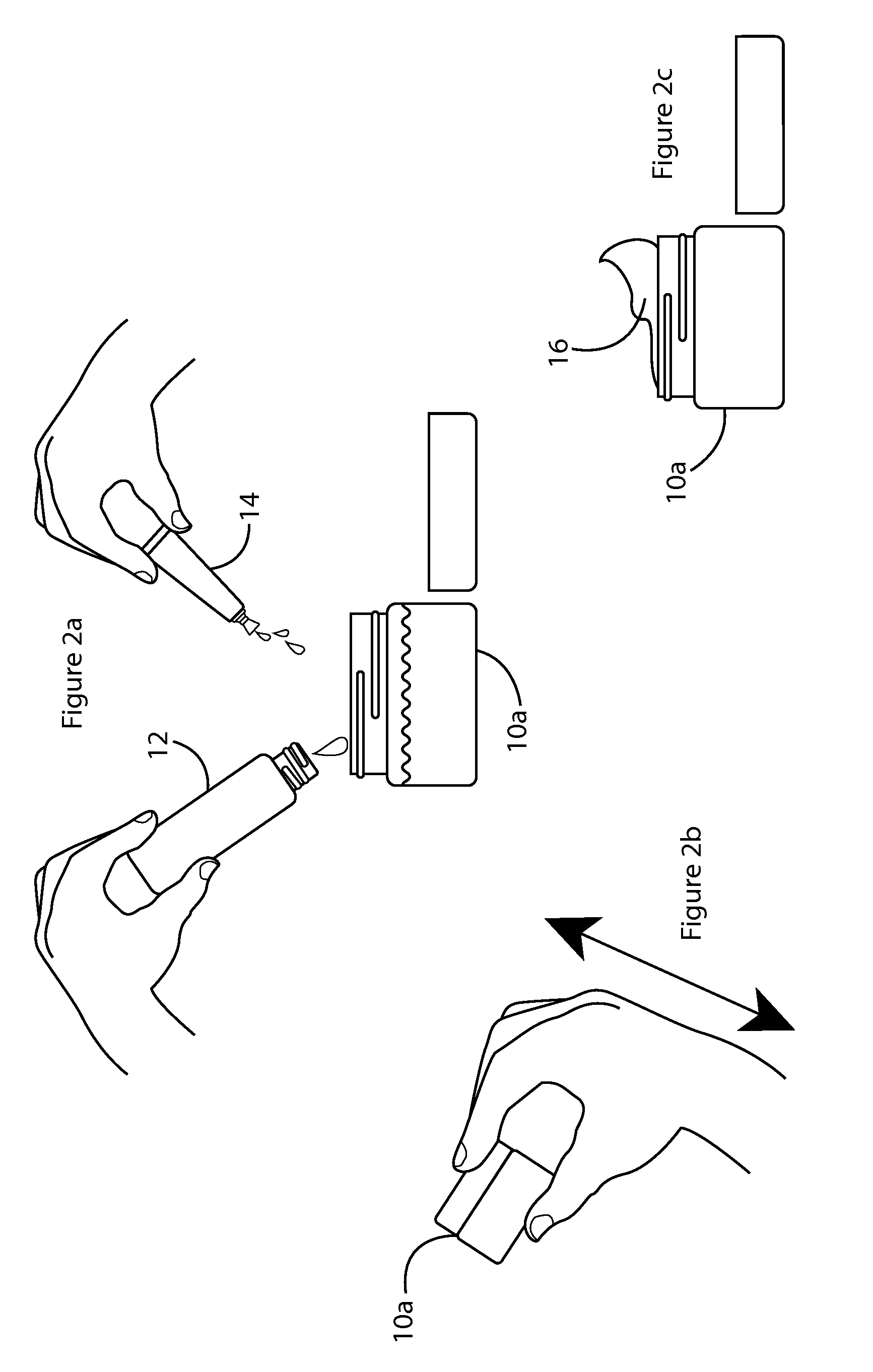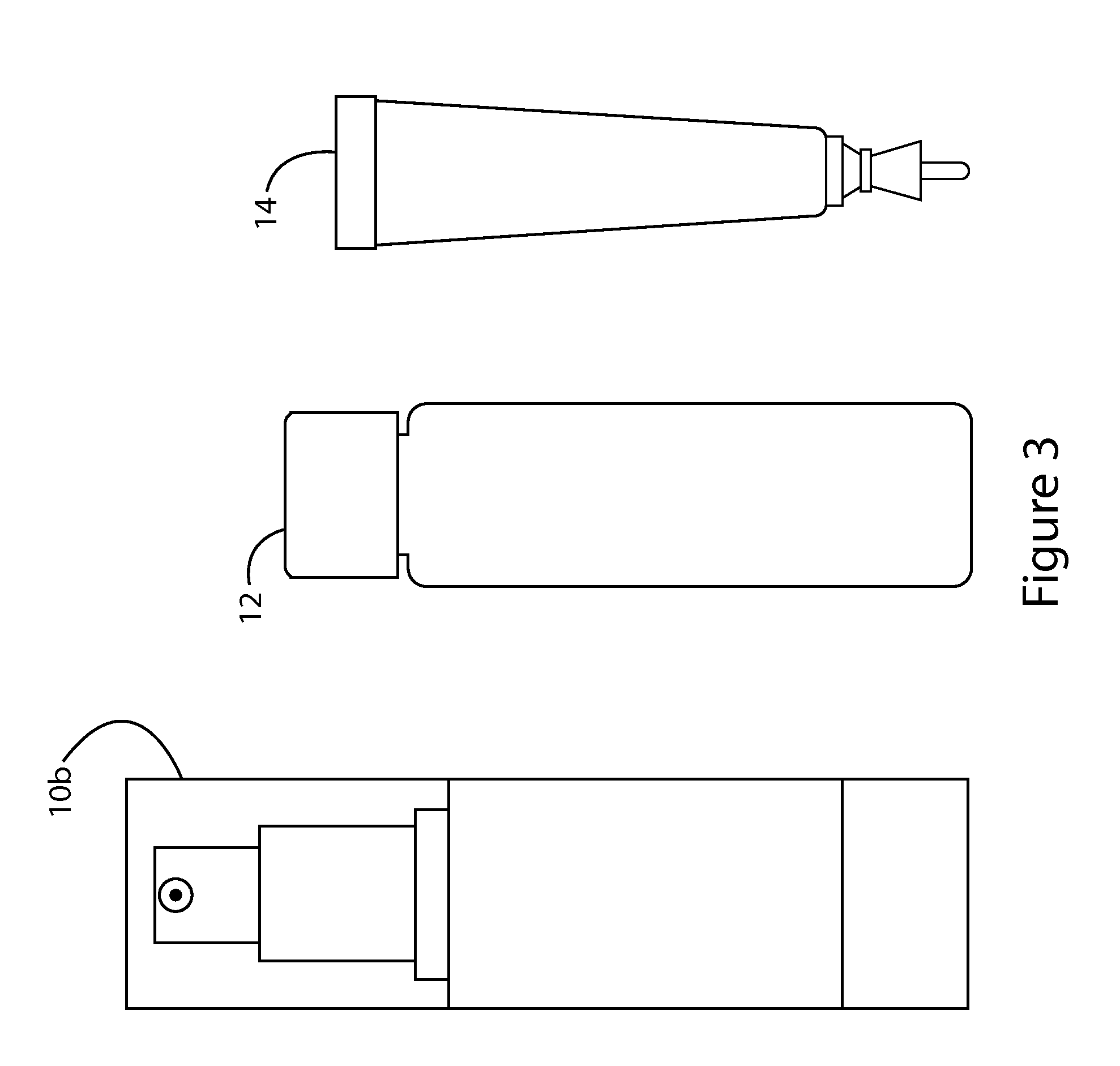Water-Gel Emulsion Compositions and Methods
a technology of water gel and composition, applied in the field of emulsion composition, can solve the problems of short shelf life, reduced product benefit, and reduced effect of compounds,
- Summary
- Abstract
- Description
- Claims
- Application Information
AI Technical Summary
Benefits of technology
Problems solved by technology
Method used
Image
Examples
polymer preparation example 1
[0049]In some embodiments, the liquid dispersion polymer may include sodium polyacrylate. The preparation also may include an emollient to the preparation in order to control the aesthetic feel of the end emulsion. For example, PPG-3 benzyl ether myristate may be used as an emollient. One example of this type of polymer preparation, including relevant proportions of each, may be available commercially from Croda International Plc. or Croda Inc. in the form of a rheology modifier sold under the trademark VISCOPTIMA SE. Polymer preparation example 1 has been found to be particularly useful in formulations including retinol. Exemplary proportions of these components within the polymer preparation, and the functions for which the components are used, are provided in the following table:
TABLE 1.0Polymer Preparation Example 1Percentage byChemicalFunctionweightSodium PolyacrylateLiquid Dispersion Polymer>50%Ethylhexyl CocoateBinding agent25-50%Polysorbate 20Surfactant1-5%PPG-3 Benzyl Ether...
polymer preparation example 2
[0050]In other embodiments, blends comprised of a polyacrylamide, binding agent, and / or surfactant may be used to achieve similar results. Polymer preparation example 2 has been found to be particularly useful in formulations including a lipid-soluble form of vitamin C, such as tetrahexyldecyl ascorbate. In some embodiments, the following blend, sold under the trademarks SEPIGEL 305, may be used:
TABLE 2.0Polymer Preparation Example 2Percentage byChemicalFunctionweightPolyacrylamideLiquid Dispersion Polymer>50%C13-14 IsoparaffinEmollient25-50%Laureth-7Surfactant1-5%
[0051]Due to the effectiveness of the polymer preparation, it may be possible to create a concentrate in which the polymer preparation is a minor component. For example, the polymer preparation may range from between about 8% to about 50% of the concentrate. After the addition of hydrator, the polymer preparation may range from about 1% to about 5% of the final product.
Exemplary Concentrates
Concentrate Examples Using Polym...
example 1
Concentrate
[0059]In one embodiment, an exemplary concentrate may include the following components:
TABLE 4.0Example 1: ConcentrateComponent% usedEmollient27.50Polymer Preparation Example 127.50Retinol Complex6.70Antioxidant Complex20.00Additional Emulsifier18.30
[0060]To create a batch of concentrate example 1, the components may be added to a vessel in the following order: emollient, polymer preparation example 1, retinol, antioxidant complex, and additional emulsifier. Next, the components may be mixed with good agitation until they are substantially dispersed and homogeneous. Preferably, the components are at low to medium speeds to reduce and / or eliminate aeration. The resulting concentrate may be an oily liquid that is yellow and unscented. Scent may be added.
[0061]Variations of these steps, such as reordering the component additions, mixing between component additions and the like also may be performed. Similar processes may be used to prepare the other concentrate examples.
PUM
| Property | Measurement | Unit |
|---|---|---|
| shake time | aaaaa | aaaaa |
| shake time | aaaaa | aaaaa |
| shake time | aaaaa | aaaaa |
Abstract
Description
Claims
Application Information
 Login to View More
Login to View More - R&D
- Intellectual Property
- Life Sciences
- Materials
- Tech Scout
- Unparalleled Data Quality
- Higher Quality Content
- 60% Fewer Hallucinations
Browse by: Latest US Patents, China's latest patents, Technical Efficacy Thesaurus, Application Domain, Technology Topic, Popular Technical Reports.
© 2025 PatSnap. All rights reserved.Legal|Privacy policy|Modern Slavery Act Transparency Statement|Sitemap|About US| Contact US: help@patsnap.com



